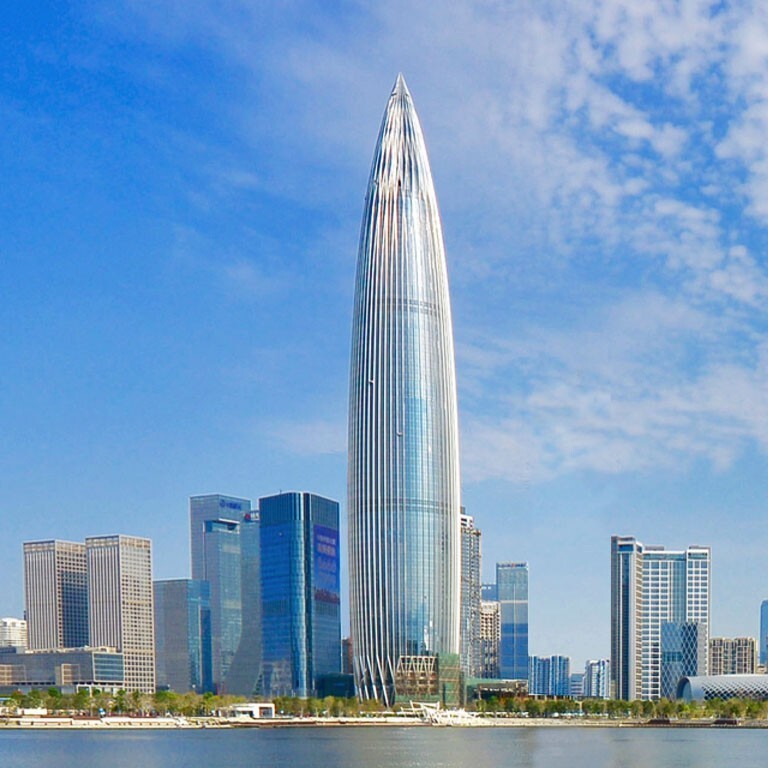
Hong Kong shared office operator TEC bets on Greater Bay Area to boost business even as Covid-19 pandemic hits demand
- A Colliers report paints a bleak picture, with many operators forced to give up space as tenant companies reassess their need for bigger work spaces
- The Executive Centre (TEC), however, is banking on the future business hub to fuel its expansion as it sees the region contributing to its growth
The outlook for the shared office segments in Hong Kong and Guangzhou is gloomy, with demand likely to decrease as the economic slump brought on by the Covid-19 pandemic forces companies to reassess their need for bigger work spaces, according to Colliers International.
The office markets in the two cities – both part of Beijing’s Greater Bay Area initiative – will be challenging this year, said a report by the property consultancy.
The Executive Centre, which provides flexible office space solutions for companies, sees opportunity further afield in the bay area, and is looking to broaden its footprint outside its home city and Guangzhou.
“The challenging business environment in Hong Kong means other operators may also return space and as a result we are likely to see negative operator take-up of circa 150,000 sq ft by year-end,” the report said.
Before the coronavirus outbreak, the co-working sector had been booming, with operators adding 526,000 square feet of space in Guangzhou and Hong Kong in 2019. That is the equivalent of about nine professional football fields.
This year, they are likely to give up nearly half of that space – 236,000 sq ft – according to Colliers.
In Guangzhou, small and medium enterprises, which account for a significant share of demand for flexible workspace in the city, felt the immediate impact of the coronavirus pandemic. They sought lower rents, and while operators extended concessions, vacancy rates in the segment rose in the first quarter.
Hong Kong’s office market is hollowing out as vacancy rate hits 10-year high
“Overall, we expect net take-up by flexible workspace operators to be negative in 2020,” Colliers said.
This notwithstanding, TEC is banking on the bay area to fuel its expansion in the foreseeable future as it sees the region contributing 30 per cent to its growth.
“We can confidently say we see growth of 30 per cent in the next 24 months in the Greater Bay Area, primarily in Guangzhou and Shenzhen and possibly some of the second-tier cities ” said Paul Salnikow, chairman and chief executive of the Hong Kong-based company.
“We are growing in China and we're seeing robust business demand there. We now have 135 centres in 32 cities and 14 countries across Asia-Pacific and the Middle East and just shy of a million square feet in China specifically, which makes up a significant part of our footprint – close to a third of it.”
At the peak of the pandemic in mainland China, TEC did not have to cut the rates it charges to keep its tenants.
With a US$1.65 trillion economy, the bay area is Beijing's initiative to link Hong Kong, Macau, and nine mainland cities including Guangzhou, Shenzhen and Zhuhai into an integrated economic and business hub.
TEC has 23 locations in the area covered by the scheme so far – – 12 in Hong Kong, six in Shenzhen, four in Guangzhou, and one in Macau.
Besides adding two locations in China – Shui On Plaza in Shanghai and The One Place in Hangzhou – it also expanded its GEM Tower Centre in Shenzhen.
World’s costliest offices are poised to enter tenants’ market
The expansion increased the company’s workstations to about 5,700 in the bay area. In the first half, those locations contributed 28 per cent of the company's revenues.
“For our mature centres, we’re forecasting over 90 per cent [occupancy rate] by the end of September,” Salnikow said. “We continue to see strong demand coming from [multinationals] and domestic corporates in China, who are looking for premium Grade A office space, but want more flexibility at the current time as they try to manage costs.”

